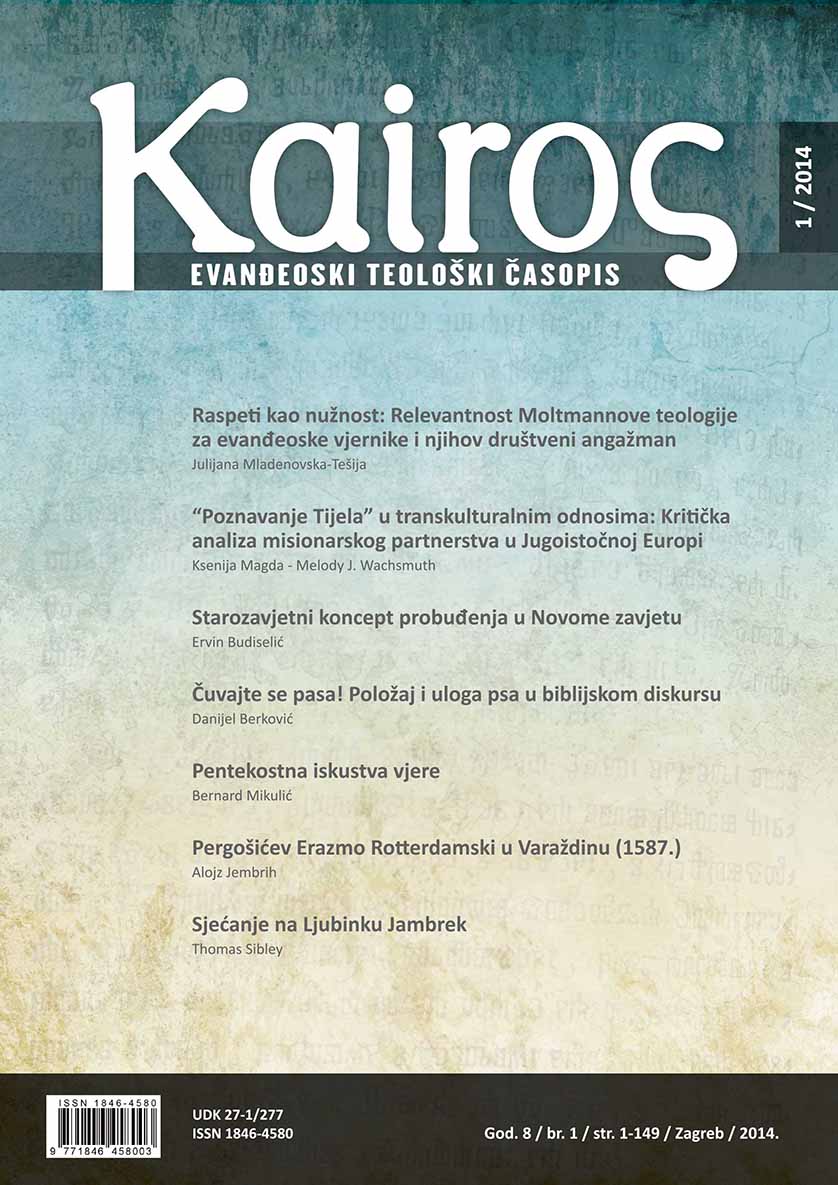

Straipsnio autorius, remdamasis kruopščia antikinių šaltinių analize, tiria daugiakalbystės reiškinį Antikoje. Poliglotams būdinga neįprasta kalbos vartosena, besiskirianti nuo gimtakalbių vartosenos (gebėjimas greitai analizuoti kalbą, pamėgdžioti svetimos kalbos garsus, greitai persiorientuoti nuo vienos kalbos prie kitos, itin gera atmintis) traukia žmonių dėmesį. Nors šie gebėjimai gali būti išugdomi, dažnai jie laikyti unikaliais, todėl poliglotai neretai vertinami kaip keistuoliai. Liudijimų apie poliglotus yra išlikę ir antikiniuose šaltiniuose. Galima pastebėti nemažai panašumų tarp poliglotų vertinimo Antikoje ir šiais laikais, bet yra ir principinių skirtumų: palyginti mažas šio reiškinio paplitimas visuomenėje, kurioje daugiakalbystė buvo įprastas dalykas, kelia tokius klausimus, kaip antai kalbos ir jos komunikacinės funkcijos vertinimas, etnocentrizmo ir imperializmo santykis, asmenybės ir kalbos sąsajos.
More...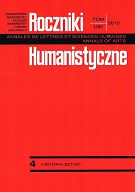
Keywords: Hagiographic etchings; hagiographic iconography; Turkish wars against Christianity in Europe; Patron Saints; grafika hagiograficzna; ikonografia hagiograficzna; wojny tureckie przeciw chrześcijaństwu w Europie; patronat świętych
Engravers of the post-Tridentine period recorded the most important events of their time in their etching graphics. They created these works with a view to memorialise the events, but also in order to inform the public opinion about them and to influence their thinking. Hagiographic iconography was among the most frequent graphic themes of the time, which was owing to the atmosphere of the Tridentine reforms. The Council of Trent rediscovered art as a medium for communicating the religious message. The 16th and the 18th century witnessed an excessive confrontation between the European denominations, brutal religious wars and the Turkish invasion into Christian countries. Artistic accounts of the era display a lot of martial motifs, with noticeable emphasis on the endangered status of Christianity. Catholic Church directed human thinking towards God as an Almighty Power holding the world in His hands. The etching graphics that have survived until today testify to the prevalence of this message. The role of the Divine Providence was repeatedly highlighted, as was the mediation of the Mother of God and the Saints: they implored God to spare Christianity from the religious and military turmoil. The paper draws upon a vast selection of European etching graphics to present the power of the iconographic propaganda, with a special focus on the protective and supportive role of the Patron Saints.
More...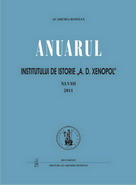
Keywords: enlightenment; Transylvania; elite; Romanian Uniate Church; confession; union; Blaj
The present study aims to outline the profile of the first generation of Transylvanian Romanian intellectuals in the 18th century through an interdisciplinary (historical and theological) approach. This approach aims to present two complementary components of the activity of the clerical elite: the intellectual formation in the Catholic academic institutions of the time (Trnava and Rome), and the identity works influenced by the Catholic reform. Effect of the religious Union of the Transylvanian Romanians with the Church of Rome (1700), the members of the first generation of the Transylvanian School were exclusively recruited from the clerical environment, and formed in the atmosphere of the Catholic Aufklärung. This fact imposed/required for the presentation and explanation of the ecclesiological and dogmatic positions of the generation. The author emphasis the way in which the united elite handled with the crisis, explained the Union itself, and faced the challenges generated by the attacks against the Union, nurtured by the interests of the metropolitan church of Karlowitz and the Russian interference in Transylvania under the circumstances of the Romanian confessional crisis in the middle of the 18th century. The present study illustrates an episode of the Transylvanian Romanians’ itinerary from a dominant and exclusivist confessional identity to their new national identity.
More...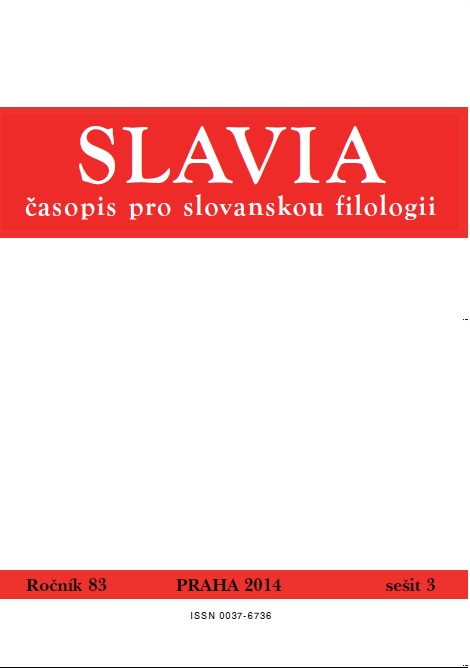
Keywords: Old Church Slavonic; Old Church Slavonic lexicon; Old Church Slavonic syntagm(a); Old Church Slavonic verb; Old Church Slavonic phraseology
The article deals with Old Church Slavonic syntagmas of verbs tvoriti, s´tvoriti, djáti in connection with an action noun, which parallelly express the same action as a simple verb (e.g. molitv4 tvoriti, d5§ti – moliti s3, bezakoni¨ s7tvoriti – bezakonovati). These constructions are studied especially in connection with Greek versions as well as with simple verbs of the identical meaning (usage frequency, semantic nuances), also the mutual ratio of the verbs tvoriti and djáti (alternatively other verbs in the same function) in single syntagmas of this type is considered.
More...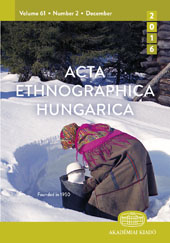
Keywords: Amazon basin; Amerinds; Baure; Believes; Bolivia; Constructive works; Brazil; 18th century; Jesuit missions; Moxo; Reductions; Spanish colonies;
This article is a transcript and French translation of the last chapters (9 to 12) of Book 1 of the Latin manuscript by the Jesuit F. X. Eder on the missions or reductions in the Amerindian nations of the Moxos and Baures. It is the continuation of the three first articles on the Jesuit missions in the now Bolivian Amazon basin in the 18th century , entitled: 1. Lima, Peru, and their inhabitants in the 18th century. 2. Jesuit missions in the now Bolivian Amazon basin in the 18th century. 3. Quality of the soil and description of the Indians.
More...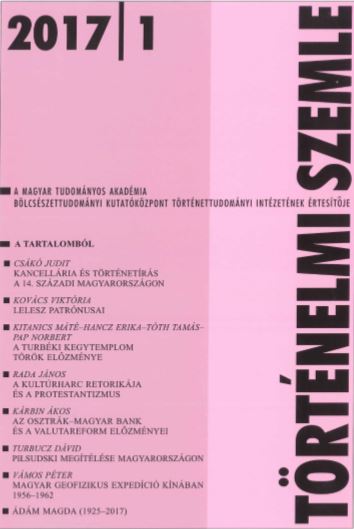
Keywords: Premonstratensians; Lelesz;
Based on a number of hitherto unused sources, the present paper outlines the history of patronage over the Premonstratensian priory of Lelesz from its foundation until the end of the Middle Ages. It seeks to answer the question of what foundations the authority of the archbishop of Esztergom was based on, and when was it effectively extended over this church in the diocese of Eger, which was founded by another prelate, and had been mostly subjected to private patronage until the middle of the 14th century. The annex contains the publication of the judicial decision which, in 1355, annulled the claim to the patronage over Lelesz of the Eszenyi and Sztritei branches of the Baksa kin, who had thus far regarded the monastery as a kind of „family church”.
More...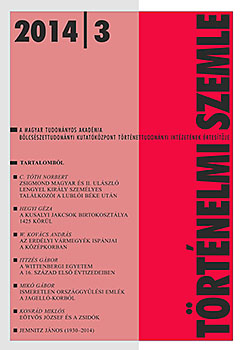
Keywords: Pippo Scolari; religiosity; family; 15th century; Hungary;
The paper aims to analyze the religiosity of the Scolari, a double-rooted family which developed social connections in the Kingdom of Hungary and in the Republic of Florence as well. By the first decade of the 15th century, three key members of the lineage: Pippo, called Lo Spano (1368/1369-1426), his brother, Matteo di Stefano (1370/1371–1426) and their cousin, Andrea di Filippo (†1426) had already obtained important secular and ecclesiastical offices in the Kingdom. Pippo, having been promoted to baronial rank by Sigismund of Luxemburg, became one of the most influential members of the royal court. Also Matteo participated in his success; they shared offices and ownership of estates in Hungary. At the same time, Andrea served the King as bishop of Várad (Oradea, Romania). Written testimonials, housed by the Florentine, Hungarian and Vatican Archives, show three distinct patterns in the ways in which the three Scolari expressed their desire of supporting religious institutions as well as of exercising mercy. Among them, Matteo seem to have been consciously donating only to Florentine religious institutions, meanwhile Pippo supported rather those located in the Kingdom of Hungary. Andrea’s case is best thought of as a combination of the two models. Pippo’s attitude in religious practices shows conformity with similar tendencies of the ruling elite in Hungary, meanwhile Matteo’s case exemplifies the role prestigious merchants played in the patronage of religious institutions in Florence. As members of the ruling elite, they developed close ties, both in their home and in their host lands, to the most important religious orders, monasteries, convents and churches. We find among the institutions patronized by the Scolari: the predecessor of the San Salvatore al Monte Convent and Church, the Santa Maria degli Angeli Monastery, the Cathedral of Fehérvár (Székesfehérvár) and the Cathderal of Várad. They also founded monasteries and chapels at both places and contributed significantly to the growing popularity of the Observant friars. Thanks to Pippo’s influence, three Scolari relatives and two of their trusted men occupied church offices in the Kingdom of Hungary between the 1410s and the 1430s. These examples well illustrate that members of the family expressed their religiosity in conformity with local costumes both in Florence and in Hungary as manifestation of wealth and social status and as means of gaining further political influence and obtaining indulgence.
More...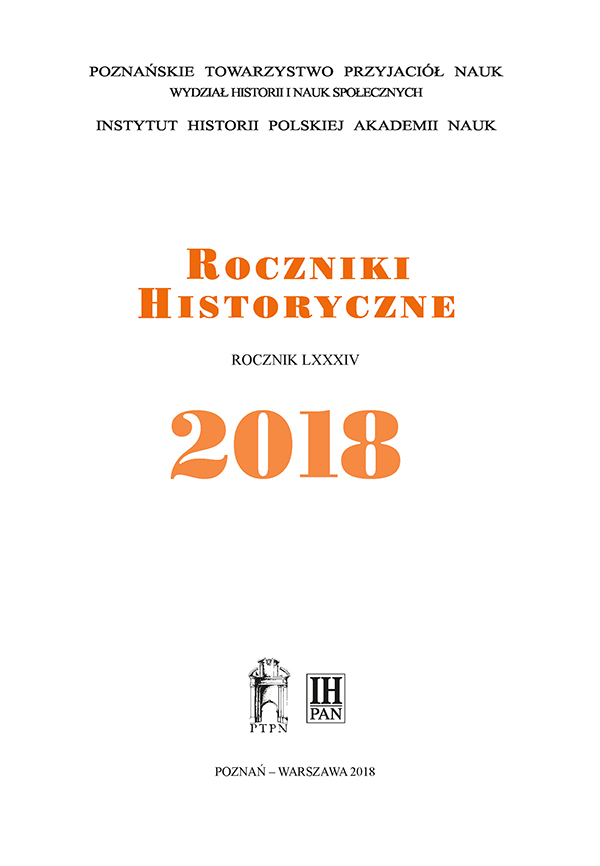
Keywords: Church; episcopal tithe; chapter; Reformation; nobility; Ruthenia; Przemyśl;
In the second half of the 16th century the Przemyśl diocese witnessed a dispute of local nobility with the cathedral chapter concerning the retention of their episcopal tithe, known as the bishop’s share. That tithe, being the lump equivalent of the sheaf tithe from peasants’ fields, was granted to the chapter by bishops at the turn of the 14th and 15th centuries. During court cases, started in 1590, the nobles, using a variety of legal and historical arguments, as well as Protestant rhetoric, tried to question the chapter’s rights. After five years of the dispute, the Crown Tribunal decided that the church side was right. It was the last serious argument between local nobility and the Catholic Church over tithes in Red Ruthenia.
More...
Keywords: rhetoric; Jan of Ludzisko; speeches; letters; manuscript; humanism;
The present article contains an analysis of the rhetorical texts which are to be found in a fifteenth-century manuscript held by the Jagiellonian Library (shelfmark 126). This collection was probably copied from a codex brought to Cracow from Italy by John (Jan) of Ludzisko, who studied medicine in Padua from 1430 to 1433. It consists of humanistic and medieval texts (mainly speeches and letters) and clearly served as a model for speeches which were written both by John himself and by his student Piotr Gaszowiec. An analysis of the full texts (and not only of the incipits) allows us to identify the hitherto unknown authors and/or the time and place of origin of some of these works. This in turn shows that the texts in the collection are divided into certain sections, some consisting of works by the same author (e.g. the speeches of Cristoforo Barzizza or the panegyrics of Bernardo Messalta) and some of speeches meant to be delivered on particular occasions (e.g. praising the sciences or mourning someone’s death). Apart from very popular fifteenth-century texts such as Andrea Giuliano’s speech for the funeral of Manuel Chrysoloras, the collection also includes Italian rhetorical texts which had hitherto been known only from Cracow manuscripts. An analysis of the manner in which the works are arranged within the volume in question allows us to distinguish certain ‘packages’ of texts that are also present in other European manuscripts.
More...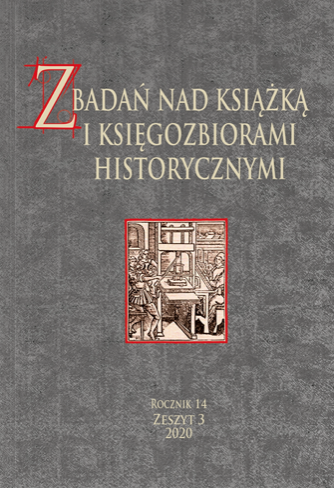
Keywords: Braniewo; old prints; printing house; Library of the Museum of Warmia and Mazur in Olsztyn; Jesuits
The publishing house in Braniewo operated in the years 1589 - 1773. Its activity can be divided into two periods. The first is that it is operated and conducted by six private typographers: Jan Saxo, Jerzy Schönfels, Kacper Weingärtner, Piotr Freimuth, Piotr Schultz and Piotr Rosenbüchler. The second period is the years 1697 - 1773, when the publishing house was managed by the Society of Jesus.The collection of the Library of the Museum of Warmia and Mazury in Olsztyn includes 64 old prints issued by this typography. The author analyzed 20 of them. A chronological key was used in the description. The selection was made additionally due to provenance marks on the volumes. Selected examples of old prints reflect the publishing character of the publishing house. The prints from the museum collection complement the prints from Braniewo kept in other libraries, including in the Library of the Higher Theological Seminary of the Warmia Metropolitan Area "Hosianum" in Olsztyn and the University Library in Uppsala.
More...
Background: The article analyzes the concept of constitutional cycles in Cicero’s De re publica. The first part presents five constitutional cycles. Next, attention was drawn to the relationship between the described concept and the concept of res publica, and thus to the importance of freedom, moderation and the tyrannical nature of all degenerate forms. In the second part, the author deals with the problems of the relations between the constitutional cycles and the Roman mixed constitution, as well as with the issue of its possible degeneration. In the end, an attempt was made to evaluate Cicero’s concept from the theoretical and strictly political side. Research purpose: Analysis of Cicero’s concept of constitutional cycles and demonstration of its originality. Methods: The article uses the historical – legal method and the comparative method. Conclusions: The structure of Cicero’s constitutional cycles is, in contrast to the “rigid” structure of Polybius’ cycle, more flexible. There is no permanent and rigid systematic pattern of change, and a systemic change (cursus mutationum) is not a foregone conclusion but rather is possible at best. The utilitas rei publicae, which is the essence of republican political thought, makes Cicero constantly tests theory with practice in his political reflection, the pragmatism of which makes the theory of constitutional cycles more “useful” for the Roman political community.
More...
Keywords: Early Middle Ages; Carolingian culture; Great Moravia; sword; scabbard; strap fittings
The paper discusses the appearance of the Great Moravian warriors’ swords and focuses on sets of strap and belt fittings used to fasten the swords. It also comments on other elements decorating sword scabbards used in Great Moravia in the 9th and at the beginning of the 10th century. The paper analyses the composition of the sword sets known from Great Moravia in the context of a wider typology and chronology of finds from European areas under the influence of the Carolingian culture between the beginning of the 9th century and the 1st half of the 10th century.An analysis of archaeological assemblages and loose finds of sword strap fittings from entire Europe (approx. 300 items) allows defining five basic types of Carolingian sword sets used in the late Carolingian times (beginning of the 9th century – 1st half of the 10th century) in the area under the Carolingian influences. Based on the analysis, it was also possible to determine the chronology and geographical scope of certain types of sword sets. Among the five identified types, four (I, II, IV, V) are known from the former Great Moravia territory. The only exception is type III, characteristic – so far – only for the north-western areas of the Carolingian Empire. The type I chronology covers the entire 9th century, while all other types are generally dated back to the 2nd half of the 9th century and the beginning of the 10th century. Detailed dating of finds can be clarified based on the ornamentation stylistics.In nearly every case, swords found in Great Moravian burials bear traces of wood suggesting that the weapons were deposited in scabbards. Based on the analysis, we were able to determine that scabbards were made of hardwood. Detailed analysis of certain finds revealed traces of fabrics and leather and, exceptionally, also fine metal elements such as small rivets or fragments of sheet metal. Commonly, scabbards were also strengthened with additional straps that also decorated the items. Those straps could have been embossed with decorative patterns.A scabbard chape from the Slovak Bojná-Valy hillfort is a unique find (Il. 8). The item was made of iron but its front side was plated with silver foil. Longer sides were inlaid with silver wire. So far, it is the only sword scabbard chape found in the Great Moravian context. The item has no contemporary analogies. It should be treated as an exceptional rarity, probably made at someone’s special request.Interestingly, in the Great Moravian context, there is no clear correlation between ornaments decorating pommels and cross-guards and the aesthetics of sets accompanying the swords – as if swords and fittings did not form a set. Moreover, swords with decorated pommels were usually not accompanied by sword sets but only by a strap-end. It seems that in Great Moravia sword sets were unpopular until the 2nd half of the 9th century when the swords with decorated pommels (types B/H and K) had been already outdated and types with undecorated pommels (type N/X and Y) became fashionable. Therefore, it seems that sword sets became popular among Great Moravian warriors in response to more modest sword decorations.
More...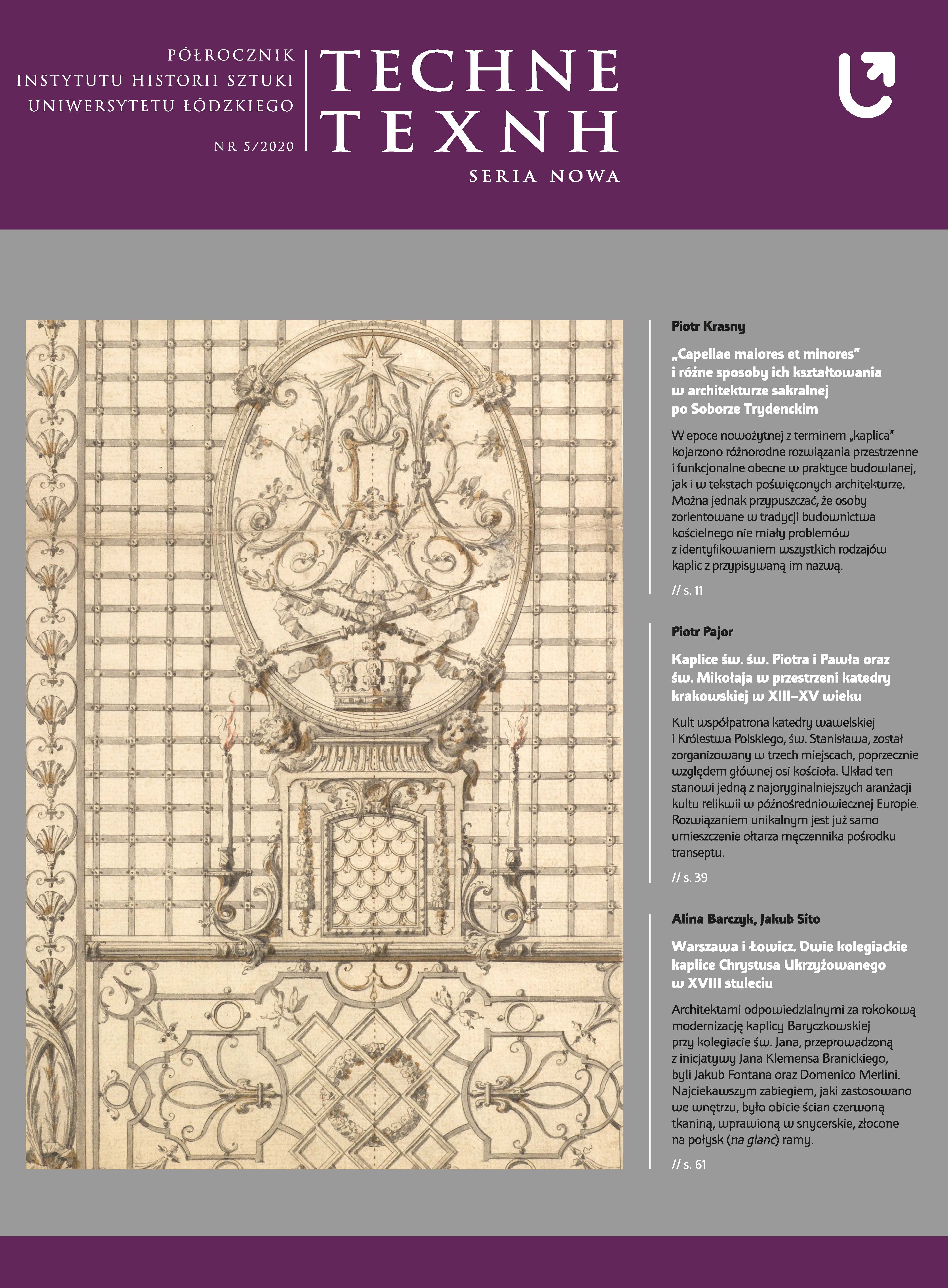
Keywords: early modern sacral architecture; early modern theory of art; sepulchral art; liturgy after the Council of Trent; chapel; sacred space in early modern period
In Instructiones fabricae et supellectilis ecclesiasticae published in Milan in 1577, in line with the tradition formed in the Middle Ages, the term capella was used to describe a part of the church interior, definitely designated as the place for altar. There, the term capella maior was referred to the church’s presbytery, and capelle minores – to the strings of identical chapels, adjacent to the sides of the nave, and sometimes also to the transept. Capella maior was already losing its spatial separateness as a result of liturgical reforms introduced after the Council of Trent. In Italy and in most European countries, it was then that great importance was attached to gathering the people at one solemn Holy Mass, at the same time striving to make its celebration as visible as possible to the gathered worshipers. Therefore, the choir partitions were removed, and the presbyteries were cleaned from elements emphasizing their spatial distinctiveness on the one hand (reliquaries, miraculous paintings, impressive tombstones), and on the other, distracting the attention of the worshipers from the celebration of the Holy Sacrifice. Such activities – strongly recommended in Instructiones – meant that the presbytery was very strongly (both spatially and ideologically) integrated with the body of the church, as a result of which in most languages it ceased to be called a chapel. On the other hand, in the documents of church factories such a term was applied to annexes connected very loosely with the space and body of the temple, to which the saints and tombstones from the presbytery were “transferred”. The construction of two such structures by the popes at the larger basilica of Santa Maria Maggiore in Rome became the confirmation of this practice by the highest authority in the Church. However, Instructiones and other Counter-Reformation texts on church shaping did not record the rapid spread of an “autonomous” chapel in sacral architecture. The Milanese work describes only the way of shaping the strings of capellae minores, so a solution present in the Italian architecturefrom the late Middle Ages. The reason for this choice was probably the fact that the chapels adjacent to the nave fulfilled a specific tradition in the liturgy in the church, and the role of autonomous chapels in this field remained insignificant.Due to the well-established local tradition in the South Netherlands, there was no integration of the spaces of presbyteries and churches in this area. In this area, Catholicism was restored after the period of violent Reformation, which meant that in the churches, first of all, elements destroyed by iconoclasts were reconstructed. Therefore, in the cathedrals and collegiate churches, with the consent of the Holy See, the partitions separating them from the corpus were reconstructed. Behind these partitions, imposing tombstones of bishops and canons were built, because only these spaces were supervised by higher clergy, while the corps were under the administration of municipalities. In Flemish, the presbytery was thus still described with the term (grote) kapel, while the side chapels, usually built between the buttresses of great Gothic churches, were called chapels (kapelletjes). Thus, in the modern era, the term “chapel” was associated with various spatial and functional solutions, both in construction practice and in texts on sacral architecture. Therefore, one should limit himself to noticing the complex presence of chapels in the history of modern architecture, and not try to formulate a precise and unambiguous definition of this type of building.
More...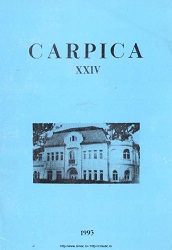
Keywords: Ethnic restructuring; north of the Danube mouths; 13th and 14th centuries;
De même que dans tout le territoire méridional de l' Europe Orientale, dans l'espace extracarpatique la période des migrations s'est prolongé beaueoup plus par rapport à d'autres régions du continent ce qui marqué fortement son évolution dans tous les plans.
More...
Keywords: Coţofeni culture; genuine tells; tell-type settlements; pseudo-tells; Late Eneolithic; Early Bronze Age;
The approach to the topic of tells in the North-Danube area, between 3500 and 2800 BC, corresponding to the Coţofeni culture (in Bulgaria, Magura–Coţofeni, Tărnava culture) has been inconsistent. This study aims to clarify a series of archaeological and terminological aspects in direct relation to those Coţofeni sites that may or may not be included in the category of tell settlements. The so-called tell settlements are also discussed and the term pseudo-tell is proposed. Sites at very high altitudes (over 1000 m) or others related to salt exploitation have generated complex stratigraphies, consisting of successive Coţofeni levels, but completely different from the types of sediments that led to the formation of “classic” tells from the lowlands. The lack of fortifications is another feature of these settlements, which takes them away from the classic definition of a tell.Following this analysis, it can be summarized that the terminological problems or the established conventions are not sufficient to define certain Coţofeni sites, such as those from Ostrovu Corbului, Basarabi or Moldova Veche. However, there are arguments to speak of tell or pseudo-tell settlements in the Coţofeni area. Compared to the impressive number of known sites in the area (over 1500), their percentage is only around 1%.
More...
Keywords: Svibe; Gornje Moštre; Visoko; antiquity; rustic villa; tower; geophysics; painted pottery; Pannonian gray pottery;
The paper presents the results of the most recent archaeological excavations at the site of Svibe in Gornje Moštre near Visoko, which were conducted in October 2020, in the organization of the Regional Museum in Visoko. The aim of the research, which relied directly on the results of experimental archaeological excavations, was to expand the ground plan of architectural remains in order to determine the character of the building complex discovered in the previous campaign. During the excavation, 6 new test pits were opened, which revealed new parts of the wall foundations with a total length of almost 45 m, illustrating the complex architecture of the site and placing it simultaneously within the context of Roman villa architecture of Late Antiquity. A comparative analysis of the situation on the ground and the results of geophysical survey suggest that the discovered architectural remains could present the remains of a fortified rustic villa on the site, which according to the typological analysis of one part of the ceramic material, can be dated to the 2nd - 4th century AD. The discovered remains represent the first architectural finds of this type in the greater Visoko area and are of immense importance for the study of architecture, urbanism, economy, and general development of the area in the late Roman period. This site, fully excavated, could potentially answer the question of the cultural transformation of the Visoko basin from late antiquity to the early Middle Ages, shed ding light on the key questions of development and origin of the medieval Bosnian state in the early Middle Ages.
More...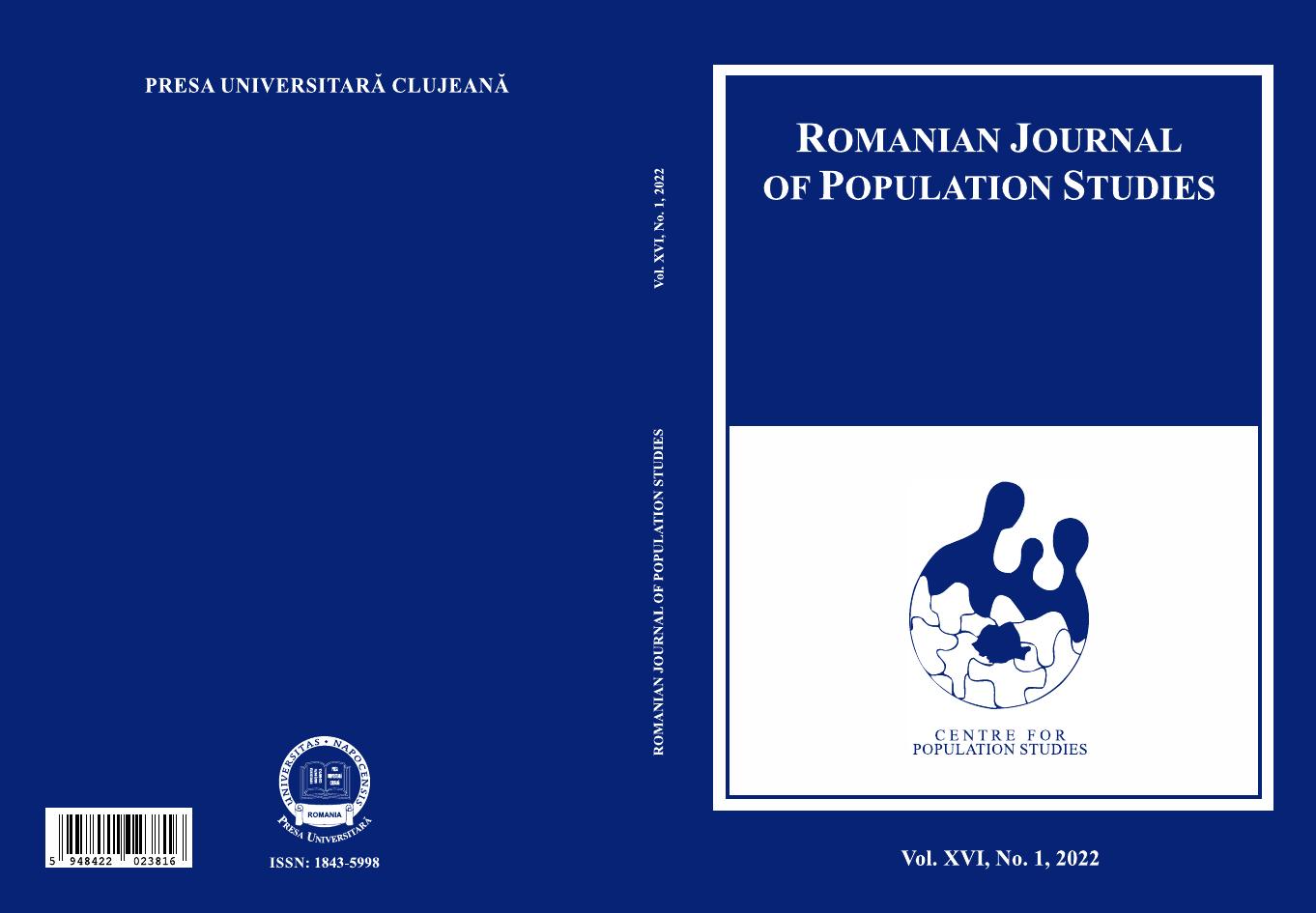
Keywords: Stem Family; Resilience; Illegitimacy; Rural property; Single-heirship transmission; Marriage strategy, Servants; Celibacy; Bastardy; Extramarital fertility; Marital nonconformism;
This essay examines to what extend illegitimacy was linked and even determined by rules of non-egalitarian transmission of family assets and values, as single-heir norm, in past Europe. Family transmission systems and mating strategies could explain why some regions, together with a high age at first marriage, used to present an important rate of illegitimacy: high frequency of births out of wedlock was observed in connexion with premarital work for young people, mostly non-inheriting daughters and sons being employed in domestic service. In rural context, this went with late marriage and/or impediments to regular unions, particularly in mountainous areas, that favoured “bastardy” and celibacy. The analyse of family transmission systems allows a better understanding of extramarital fertility. It is argued that the rural stem family was a main determinant of illegitimacy and marital non conformism in past Europe.
More...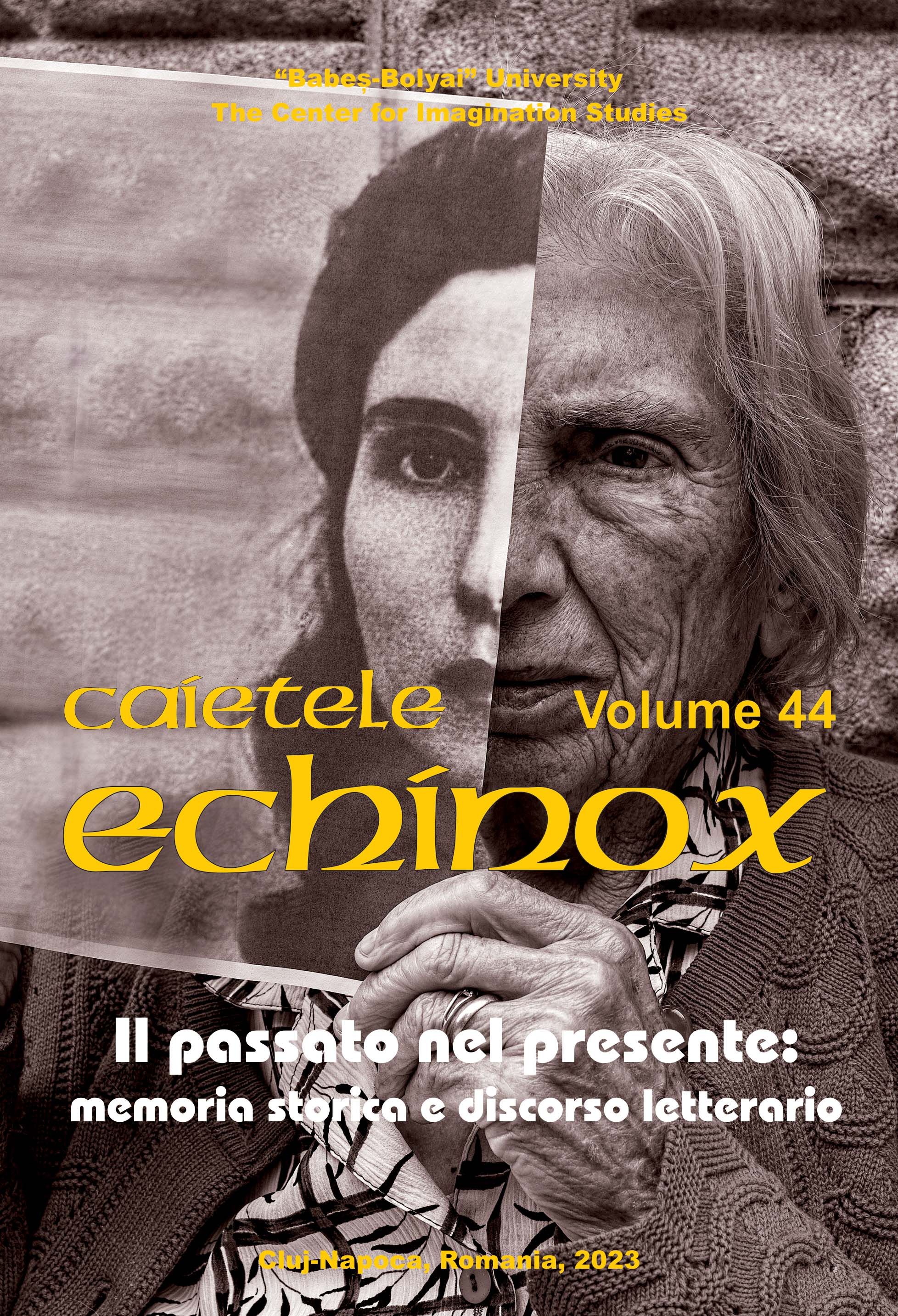
Keywords: Rossana Rossanda; Un viaggio inutile; Francoism; Dictatorship; Memory;
In 1962 Rossana Rossanda undertook, on behalf of the Italian Communist Party, a tripto Spain, aiming to strengthen the anti-Franco forces dispersed after the civil war. Instead, her intinerary seemed to be useless, as the title ofthe book collecting the report of the expedition suggests (1st edition Bompiani, 1981). Un viaggio inutile springs from a double mnemonic filter: the clandestine operation imposed a ban on transcribing travel notes, which Rossanda drafted only on the way back; secondly, eighteen years passed between the experience in Spain and the rewriting of the notes, which took place in 1980. The present work, therefore, aims to explore both the mnemonic devices of Rossanda’s journeyand its reception by the Spanish public, also by resorting to the translation of the text (Un viaje inútil, Laia, 1984 and Tirant Humanidades, 2021).
More...